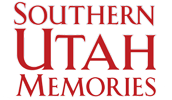This is an unusual book. There are 81 stories. They do not appear in chronological order. The reader may feel confused after reading a half dozen stories but the stories are so interesting she just keeps reading. They will understand the book better if they know that the author worked for newspapers in Washington County for 21 years. Each week he presented them with an article about some historic place or person in the area. After doing all that, he decided to put them in a book. As a result, readers can enjoy 81 stories about southern Utah, all of them well documented, but they are placed in the book as the author chose and one story does not relate to the one before or the one after. Nonetheless, the reader finds them so interesting that she/he keeps reading.

Story 11 is one of the more important articles. It is about the U & I Sugar Company. It is based on an interview with Doug Quayle and Harold Cox. For 50 years farming in Washington County was actively involved in raising sugar beets and extracting the seeds for sale. The St. George operation was part of U & I Sugar Company located in Salt Lake City. The St. George plant was a great benefit to hundreds of farmers who could get sugar beet seeds and sell them. By 1979 U & I Sugar closed the St. George plant, which was located in the pioneer opera house.
Another interesting story is Number 14, “How Utah Got Its Size and Shape.” The article reviews the early history of the region—the Anasazi Indians, the Spanish impact, the Dominguez and Escalante Expedition, the mountain men such as Jim Bridger. Then the Mormon treks to Utah led to the establishment of Mormon control. Soon this led to an application to Congress to be a U.S. Territory that included present-day Utah, Nevada, northern Arizona and southern California. In March of 1861 Congress created the Nevada Territory, leaving what became the Utah Territory with boundaries like today, which do not include southern California or northern Arizona or Nevada. The article is extensive but insightful.
The story of Rockville in story 36 is a classic. It portrays the families in 1862-3, the establishment of irrigation, the role of leaders: James Lemmon, Isaac Behunin and John R. Crawford. Initially the people in Rockville raised cotton but soon changed to wheat and corn. James Jennings is quoted saying, “Everyone worked hard and was happy,” in the middle of the article. Today Rockville is still functioning well.
A couple of other articles are important but need improvement. The building of the St. George Temple (story 7) needs to include the codification of the temple ceremony by Wilford Woodruff because it was later used for many other temples. In story 79, which is about the building of the Gunlock Reservoir,
that story should include an explanation of the Dixie Project, funded by Congress, to build a major dam above Hurricane. The State of Utah added a commitment to fund the Gunlock Project. For many reasons the engineering of the Dixie Dam did not succeed but the Gunlock Reservoir did. It was designed by Jay Bingham, a Salt Lake City engineer.
Story 16, about Anthony W. Ivins, is important. It describes the significance of Ivins’ many efforts of protecting the Shivwits Indian Band and becoming one of the promoters of a very large cattle industry, being a missionary in Mexico and later being a leader of the Mormon colonies when they were being driven out of Mexico. He became an apostle when Heber J. Grant was president and became influential in convincing the state to take over Dixie College in the 1930s. It is obvious that the town of Ivins was named for him and he donated property for a Paiute Indian Reservation.
The above examples show the vitality of southern Utah. The stories are based on many articles that Loren Webb wrote for the Spectrum newspaper, for the KWBR radio station, and for the KCSG website. Eighty-one of the stories have been published under the title of SOUTHERN UTAH MEMORIES by Loren Webb. They were printed in 2020 and are a fascinating and enjoyable read.
Douglas D. Alder earned bachelor’s and master’s degrees in history, political science, and German from the University of Utah, 1957-59. He was awarded a doctorate in modern European history at the University of Oregon (1966), following a Fulbright grant that allowed him to pursue research at the University of Vienna for his dissertation on the First Austrian Republic (1919-1932). He was appointed Assistant Professor of History at Utah State University in 1963, where he taught German history and modern European history and, in 1974, was appointed director of the Honors Program. He published articles on Austrian history and on social science education, and edited Cache Valley: Essays on Her Past and People (1976).
In 1986, he was appointed President of Dixie College, in St. George, Utah. He returned to teaching history in 1993, this time at Dixie College, and continued until 1998, when he was called to be a counselor in the presidency of the St. George Temple for three years. Afterwards, he resumed his teaching, now as an adjunct history professor at Dixie College. In 1996, he and Karl Brooks wrote A History of Washington County: From Isolation to Destination (which was reissued in a second edition in 2007). In 2010, he published A Century of Dixie State College of Utah, for the college’s centennial. Professor Alder has also published numerous Mormon-related articles, reviews, and essays, as well as fiction including the novel Sons of Bear Lake (2002). He and Richard Schmutz have completed a manuscript about the history of the St. George Temple.
Dr. Alder has been active in the Mormon History Association (serving as president, 1977-1978), the Utah Historical Society, the Utah Humanities Council, the Utah Arts Council, the Grafton Restoration Association, Historic St. George LIVE, and the Washington County Historical Association.
He is married to Elaine Reiser. They have four grown children, twelve grandchildren, and two great-grandchildren. They reside in St. George, Utah.
